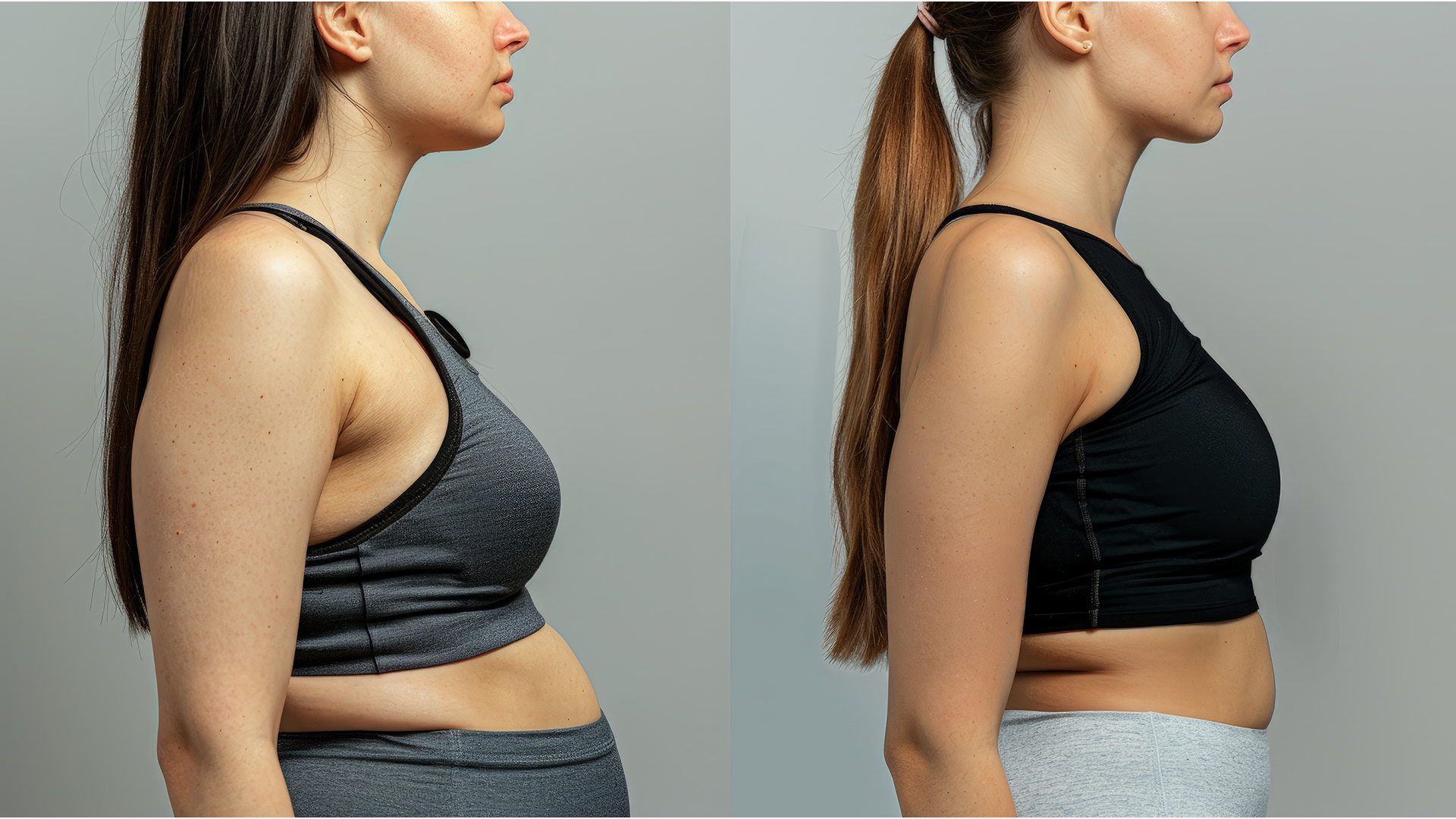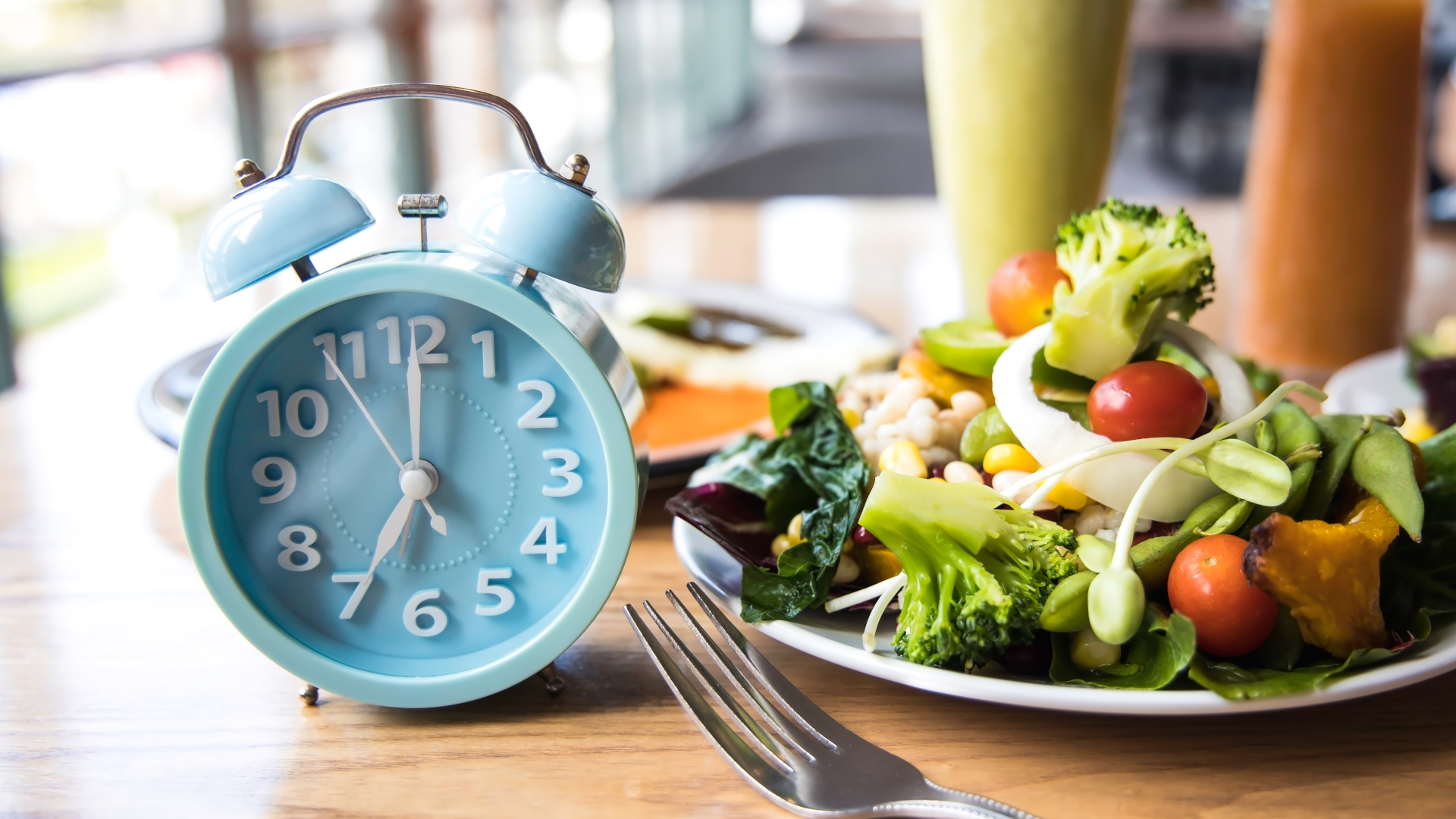Belly fat. It just seems to creep up out of nowhere, doesn’t it?
One day you’re walking around with a flat, toned stomach, then suddenly: BAM! It’s a belly.
And from there, it all begins to spiral. You notice that your clothes don’t fit like they used to… You feel tired all the time… You lose your confidence…
So many of us find ourselves in this situation and feel guilty or ashamed. But sometimes, life just gets in the way. Family, kids, career, social life – it’s hard to balance it all and then find the time to stay healthy and in good shape.
But that’s OK. In fact, just recognizing this and wanting to do something about it puts you way ahead of most other people. And that’s why you’re here.
You want to get lean, regain your mojo, and look and feel great. And we want to help.
It doesn't matter whether you have a history of exercising to lose weight or if you’re brand new to the idea – either way, we’ve got you covered.
The first thing we’ll look at en route to getting you into your desired shape is running.
Now, if the very idea of running immediately sets you on edge: don’t worry! We’re going to look at lots of different ways you can incorporate putting one leg in front of the other into your daily routine. We’ll also break down what belly fat is, see if running can help you lose belly fat (spoiler alert: it can), and help you determine what your next steps should be. (Yes, that was a pun. We regret nothing.)
Ready? Set? Let’s go!
Why Do We Get Belly Fat?
Before we get into how to lose belly fat, we first need to take a look at what it actually is and why fat piles up in such a specific area.
The first thing to know is that there are actually two different types of body fat.
This isn’t something we tend to hear too much about, but we should because it’s important to understand the difference between the two if we want to lose weight effectively.
The first type of fat is called subcutaneous fat. Everyone has this spread across their body parts in varying amounts. This type of fat is located just below the skin and plays a key role in storing energy, protecting your muscles and bones, and insulating your body. Whilst this is clearly important to your overall health, too much can be a bad thing – particularly if you also have an abundance of the other type of fat.
This second type is known as visceral fat, which surrounds your internal organs and tends to show up around your abdomen. It’s mostly this deep visceral fat that leads to ill health (including serious issues like diabetes and heart disease) as well as that protruding belly that we are all so keen to shrink down.
Once upon a time, our ancestors needed to be able to store this abundance of fat for the times when food was scarce; a trait that we have maintained over the years, despite most of us now having access to an almost unlimited amount of food. These days we want to avoid this sort of additional storage of body fat – particularly around the belly.
Whilst there is a clear difference between the two types of fat, both of them play by the same rules when it comes to weight loss – after all, when you lose weight, you typically lose it across your whole body.
Fat, of either type, is essentially adipose tissue stored as energy from calories taken in. So if you regularly consume more calories than you burn off in a day, you will gain weight.
However, the flip side of this is that to lose weight, you simply need to burn more calories than you consume.
This brings us to a great way to do just that: running.
The Challenge of Shedding Belly Fat for Regular Runners
Belly fat is often the most challenging area to slim down, even for those who hit the pavement regularly. Unlike other parts of the body that respond more predictively to exercise, the abdomen tends to cling onto fat stubbornly. Here's why:
1. Biological Factors
- Visceral Fat: This type of fat resides deep within the abdominal cavity. It surrounds vital organs, making it harder to eliminate than subcutaneous fat located just under the skin.
- Hormonal Influence: Stress hormones like cortisol can trigger the body to store more fat around the midsection, which regular running might not completely counteract.
2. Dietary Habits
Even dedicated runners aren't immune to dietary pitfalls. Here are common mistakes:
- Hidden Sugars: Many fitness enthusiasts, including runners, reach for protein bars and sports drinks. Though marketed as healthful, these often contain significant sugar levels that promote fat accumulation, particularly around the belly.
- Caloric Compensation: After an intense run, the temptation to consume additional calories can lead to overeating, negating the calorie deficit created by exercise.
3. Adaptation and Routine
- Body Adaptation: When the body gets accustomed to a running routine, it becomes more efficient at conserving energy, which can slow down fat loss.
- Lack of Variety: Sticking strictly to running without mixing in other types of workouts (like strength training) can limit overall calorie burn and fat loss.
Tips to Combat Stubborn Belly Fat
- Diversify Workouts: Incorporate activities such as interval training and strength exercises to enhance fat burning.
- Mindful Eating: Pay closer attention to nutrition, focusing on whole foods over processed options, and be wary of sugar content.
- Stress Management: Practice stress-reducing techniques to help minimize cortisol levels and its impact on fat storage.
Understanding these factors can aid runners in adjusting their strategies to tackle stubborn belly fat more effectively.
Does Running Help Burn Belly Fat?
The simple answer is yes, running can help you burn belly fat. Running burns calories, so if you combine regularly going for a run with a calorie deficit, you will lose weight. Brilliant!
What sort of running should you do? This will depend on your goals, as different approaches to running will lead to different results.
Just compare the physique of a typical Olympic sprinter to that of a marathon runner and you’ll see exactly what we mean. Both types of athletes run in distinct ways that lead to contrasting outcomes for their bodies.

When you run, the number of calories you burn can vary based on numerous factors, including your weight and running pace. For instance, someone weighing 180 pounds will typically expend around 170 calories for every 10 minutes of running at a consistent speed. Thus, if this individual maintains the same pace for a 30-minute session, they would likely burn over 500 calories.
Factors Influencing Caloric Burn:
-
Weight: Heavier individuals tend to burn more calories for the same activity because more energy is required to move their mass.
-
Pace: Faster runs generally consume more calories per minute than slower, steady-paced runs.
-
Duration: The longer you run, the more calories you will burn, multiplying your minute-to-minute caloric expenditure.
By understanding these elements, you can better estimate your personal caloric output during a run. Always adjust for your specific conditions to get the most accurate results!
Short-distance specialists have to build strong leg muscles for explosive power and speed, whereas long-distance runners are all about working on their stamina and longevity.
The good news is that you don’t have to stick to just one form of running – and there are plenty of types to consider. As well as going for a short jog or a distance run, you could also try:
-
Trail running: This will test your body in different ways. As you run across varied terrain, you’ll have to adapt your speed as well as your approach, so you’ll also be getting a bit of a mental workout and a test of your concentration too.
-
Interval running: To really get your blood pumping, head down to your local park and sprint flat out from one end to the other (or between two notable points if the park is huge), then slowly walk back to the start. Then do it again. And again. Four or five intervals like this feel absolutely brutal, but you’ll soon notice the fat dripping off you.
-
Hill sprints: Oh boy, these ones are a killer. They’re basically intervals on an incline. Sprint up a hill, then walk back down and repeat however many times you can. (This really is a next-level approach, so don’t throw yourself in at the deep end and try these on day one.)
- High-intensity interval training (HIIT): Combining short bursts of running with other exercises will freshen up your workouts and help you avoid boredom or stagnation. You could also do sprint/jog intervals on a treadmill for an intense indoor HIIT workout.
The best thing about running for weight loss is that you can constantly change what you do. There are so many options. You can vary the pace, the location, the length of time, the distance… You’re free to mix it up however you see fit.
It doesn’t matter if you run outdoors, on a treadmill, do laps in the garden, or even just go for a nice long walk – it all adds up, and anything is better than nothing.
How Often Should You Run to Lose Belly Fat?
Achieving a flatter stomach often requires consistency and effort, especially when it comes to running. To effectively reduce belly fat, aim for 30 to 60 minutes of moderate-intensity exercise about four to five times each week. While this may seem daunting amidst a busy lifestyle, you can diversify your activities.
Here’s a balanced routine:
- Run three times a week for around 30 minutes each session.
- Complement your runs with a swimming session and either a gym workout or a dance class.
Combining varied exercises not only keeps your routine exciting but also boosts calorie burn. And remember, pairing your workouts with a mindful diet is key to successfully targeting that stubborn belly fat.
How to Lose Belly Fat with Running: Dietary and Lifestyle Changes
Losing belly fat can be especially challenging, even for dedicated runners. While running is a highly effective exercise for weight loss, staying fit requires more than just hitting the pavement. Here are some dietary and lifestyle adjustments to support your belly fat loss journey:
1. Optimize Your Diet
-
Prioritize Whole Foods: Focus on consuming nutrient-dense foods like fruits, vegetables, lean proteins, and whole grains. These not only fuel your runs but also promote a healthy metabolism.
-
Limit Sugary Products: Avoid excess sugar found in protein bars and sports drinks. Opt for snacks and hydration options with natural ingredients and lower sugar content.
-
Control Portion Sizes: Even healthy foods can contribute to calorie overload if eaten in large quantities. Stay mindful of portion sizes to keep your calorie intake in check.
2. Hydrate Properly
Staying hydrated is crucial for performance and recovery. Replace sugary sports drinks with water or electrolyte-rich options without added sugars. Adequate hydration helps in maintaining a healthy metabolism and aids fat loss.
3. Tweak Your Running Routine
-
Incorporate Intervals: Adding interval training to your routine can increase your heart rate and boost fat burning. Alternate between periods of high-intensity running and slower recovery paces.
-
Change Terrain: Running on varied terrains like hills or trails can engage different muscle groups, enhancing calorie burn and, subsequently, fat loss.
4. Adopt a Balanced Lifestyle
-
Get Enough Sleep: Quality sleep aids in muscle recovery and regulates hormones that control hunger and fat storage.
-
Manage Stress: High stress can lead to hormonal imbalances that encourage fat accumulation. Practices like yoga, meditation, or deep breathing can help reduce stress levels.
By making these dietary and lifestyle changes, your efforts on the track can lead to more significant results in reducing belly fat effectively. Remember, consistency is key, so keep up with your healthy habits for lasting benefits.
Common Dietary Mistakes Experienced Runners Make Affecting Belly Fat Loss
Even seasoned runners can find themselves frustrated by stubborn belly fat that just won’t budge. Surprisingly, the culprit often lies in their diet. Despite regular exercise, certain nutritional missteps can derail fat loss efforts.
Overreliance on Protein Bars and Sports Drinks
One common pitfall is the frequent consumption of protein bars and sports drinks. While marketed as healthy options for active individuals, these products often hide high sugar content. The sugar not only adds unnecessary calories but also tends to accumulate around the midsection.
Misjudging Portion Sizes
Another dietary mistake is underestimating portion sizes. Even healthy foods can contribute to excess calorie intake if not portioned correctly. This oversight can easily lead to a calorie surplus, hindering fat loss.
Lack of Variety in Nutrient Sources
Runners often stick to a limited range of foods they consider ‘safe’ or ‘effective.’ However, a lack of variety can lead to nutritional imbalances, making it difficult to achieve optimal body composition.
Tips for Improvement
- Opt for Whole Foods: Choose whole, unprocessed foods to ensure balanced nutrition.
- Monitor Sugar Intake: Read labels carefully and limit consumption of sugary snacks and drinks.
- Pay Attention to Portions: Measure food servings to avoid overeating, even if the food is nutritious.
- Diversify Meals: Incorporate a wide variety of fruits, vegetables, and lean proteins to meet dietary needs.
By addressing these common dietary mistakes, runners can enhance their ability to shed unwanted belly fat effectively.
Understanding Cross-Training for Belly Fat Loss
What is Cross-Training?
Cross-training is a comprehensive fitness approach that combines a primary exercise with various secondary activities. For example, if running is your main workout, you could incorporate swimming or cycling to enhance overall fitness and reduce the risk of overuse injuries.
How Does It Aid in Losing Belly Fat?
Cross-training can be particularly effective in targeting belly fat due to its multifaceted benefits:
-
Variety in Workout: Including different types of exercises keeps your routine exciting and ensures you engage multiple muscle groups, leading to more balanced fitness.
-
Improved Calorie Burn: Secondary activities like swimming and cycling are great for boosting your calorie burn. More calories burned means a greater potential for fat loss, including stubborn belly fat.
-
Low Impact on Joints: These exercises are typically low impact, which minimizes stress on your joints. This characteristic allows for more frequent workouts without the added risk of injury, keeping you consistent.
-
Time Efficiency: It’s recommended to keep these secondary activities relatively short, around 30 to 60 minutes. This timeframe is efficient for maximizing fat burn without exhausting you or leading to burnout.
By intelligently combining different exercises, cross-training supports your primary fitness goals while also enhancing endurance, reducing injury risk, and accelerating fat loss. Incorporate a mix of workouts to keep your routine effective and engaging.
Frequently Asked Questions About Running
Let’s finish up with the answers to a few frequently asked questions that might help you decide how to get started with running.
Does running on a treadmill burn belly fat?
It sure does. Running on a treadmill is still running. Sure, you might not be out in the sunshine with nice scenery to take in, but you’ll be burning calories the same as you would if you were running outdoors. If you are planning to get on the treadmill, make sure to run on a slight incline, as this will mimic the outdoor terrain a bit more and take some of the impacts off of your knees (just a couple of percent will be fine, you don’t need to go crazy and pretend you’re climbing a mountain).

Does running in place burn belly fat?
As with running on a treadmill or outside, jogging on the spot will burn calories. The main downside to this approach (besides being a bit boring) is that you can’t really get into a rhythm that you can keep up for very long. We suggest incorporating running on the spot into a HIIT workout, going all out for bursts of 20 or 30 seconds before a quick rest, then going again – either with another round of running or of a different exercise.
Does running or cycling burn more belly fat?
Running and cycling are both great aerobic activities that get your heart rate up and your blood pumping. Any form of cardiovascular exercise will burn calories and help you lose belly fat, so it’s really down to your own personal preference which you do.
Running tends to be more of an intense calorie burner (we recommend using a calorie calculator to get an accurate figure), but cycling is a lower impact (making it easier on your joints and muscles). Plus, you can always switch up what you do, so it doesn’t necessarily have to be one or the other.
What Else Can I Do To Lose Belly Fat?
Running is a great place to start when it comes to losing belly fat, and it can provide the perfect motivation to take your weight loss to the next level.
Hopefully, we have inspired you to lace up your running shoes and hit the asphalt, but we don’t want to stop there. We want to help you step it up another gear so you can shed the fat and keep it off for good.
If you want to really change your life and be in better shape than ever before, sign up to our email series on how to lose weight and burn belly fat fast. We provide lots of helpful information and top tips that can get you exactly where you want to be with your health and fitness. So what are you waiting for? Join us there and let’s blast that fat!




